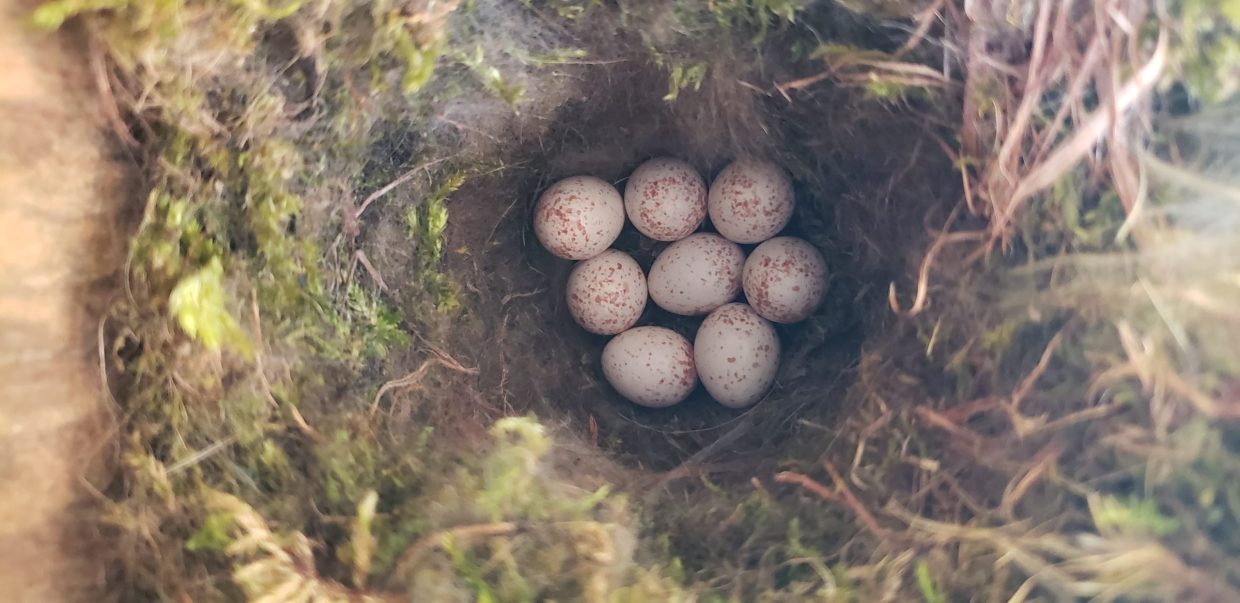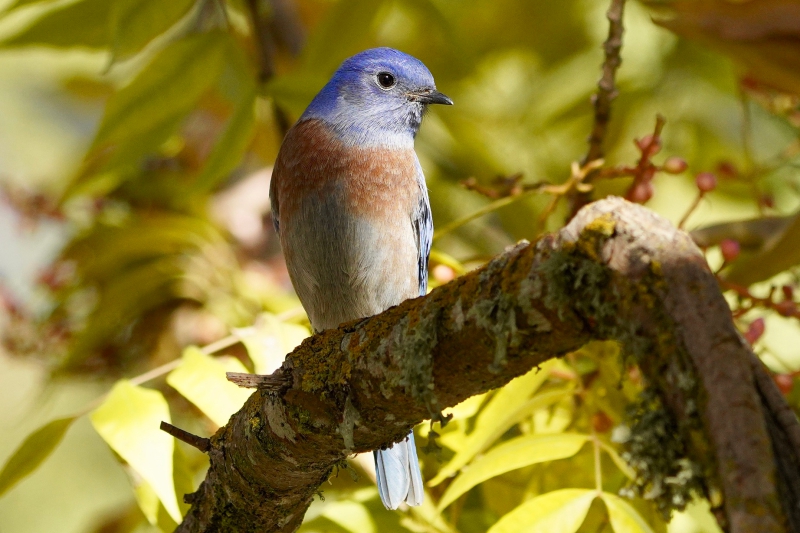The breeding season has ended, and we have tabulated our Eastern Bluebird nesting results. The season started rocky, with unseasonally warmer weather enticing birds to nest early in March, only to be hit with cold weather in April. The rollercoaster temperatures made it challenging for the wildlife.
April allowed us to install four new nest boxes at the Clarence Nature Center, bringing our total number in Erie County to twenty. Add those to the boxes in Niagara County, and we monitored forty-four boxes this year.
Our volunteers worked hard to care for the nesting birds and collect as much data as possible. Seriously, our team has done a fantastic job and should feel proud of what we have accomplished.

Garner Light and Angela Baron adding predator baffles to poles. © A. T. Baron
So, how did our feathered friends do this year? Well, let me show you the stats from both counties.
Nesting Data


Inside The Numbers
These numbers are for all species of birds that used our boxes. We aim for Eastern Bluebird (Sialia sialis). Still, we also get Tree Swallows (Tachycineta bicolor), House Wrens (Troglodytes aedon), Black-capped Chickadees (Poecile atricapillus), and the invasive House Sparrows (Passer domesticus). These birds are cavity nesters, and our boxes provide convenient substitutions for natural cavities.
Of the numbers shown above, Bluebirds attempted 36 nests this season. A nest attempt is any nest with at least one egg present, but we also include nests constructed while monitoring the boxes, even if no eggs were laid as actively used nests.
The bluebird nests produced 113 eggs, 83 nestlings, and 77 fledglings. Twenty-three of the attempts produced at least one fully-fledged young. That’s a 63.9% success rate.

Black-capped Chickadee nest with eggs. © A. T. Baron
For the other species of birds, we aided in the fledging of 60 Tree Swallows, 52 House Wrens, and 8 Black-capped Chickadees. We also successfully prevented any House Sparrows from using our boxes by diligently implementing our active deterrent measures.
The Len Anderson Memorial Bluebird Trail has aided in the fledging of 432 Eastern Bluebirds since its inception in 2013. You can find the full collection of stats here.
Data Beyond Our Trail
All of our data is uploaded to the Cornell Lab of Ornithology NestWatch site. From there, scientists can access our findings and those of others from around the country to better track the status and trends in bird reproductive biology. It’s citizen science! We also pass on our data to the New York State Bluebird Society for a more local look at how our state bird is doing.
If you’re interested in volunteering to monitor our nestboxes, please contact us. The experience is rewarding and a benefit to nature and our communities.

